Celebrating Hispanic Heritage: Jaime Laredo (Violin ’59)

“He has everything a virtuoso violinist needs. But he has more than that. He is a violinist of profound musicianship.”
—The New Yorker
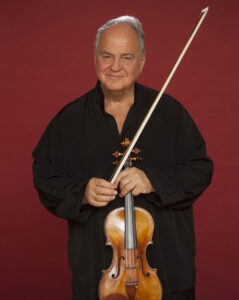 Over the past six decades, renowned violinist, conductor, recitalist, pedagogue, chamber musician, and Curtis alumnus Jaime Laredo (’59) has performed on some of the world’s most prestigious stages since his orchestral debut at age 11 with the San Francisco Symphony. Born in Cochabamba, Bolivia, in 1941, he studied violin under Antonio de Grassi and Frank Houser before entering Curtis in 1954 at age 13, studying with legendary 20th-century violin teacher Ivan Galamian.
Over the past six decades, renowned violinist, conductor, recitalist, pedagogue, chamber musician, and Curtis alumnus Jaime Laredo (’59) has performed on some of the world’s most prestigious stages since his orchestral debut at age 11 with the San Francisco Symphony. Born in Cochabamba, Bolivia, in 1941, he studied violin under Antonio de Grassi and Frank Houser before entering Curtis in 1954 at age 13, studying with legendary 20th-century violin teacher Ivan Galamian.
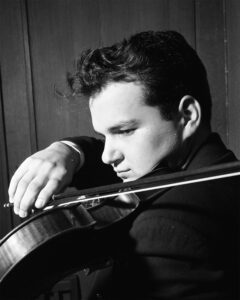 While a student at Curtis in 1958, Mr. Laredo rose to international prominence after winning the esteemed Queen Elisabeth of Belgium Competition, and an October 1960 solo recital at Carnegie Hall further bolstered his fame. Appearances with the Royal Liverpool Philharmonic Orchestra, Boston Symphony Orchestra, the Chicago Symphony Orchestra, the New York Philharmonic, the Cleveland Orchestra, the Philadelphia Orchestra, the Royal Philharmonic, and the Scottish Chamber Orchestra followed.
While a student at Curtis in 1958, Mr. Laredo rose to international prominence after winning the esteemed Queen Elisabeth of Belgium Competition, and an October 1960 solo recital at Carnegie Hall further bolstered his fame. Appearances with the Royal Liverpool Philharmonic Orchestra, Boston Symphony Orchestra, the Chicago Symphony Orchestra, the New York Philharmonic, the Cleveland Orchestra, the Philadelphia Orchestra, the Royal Philharmonic, and the Scottish Chamber Orchestra followed.
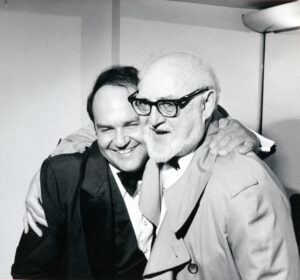 Mr. Laredo taught at Curtis from 1971 to 2004, followed by Indiana University’s Jacobs School of Music and Cleveland Institute of Music. He recently completed 20 years as music director of the Vermont Symphony Orchestra. Other conducting and performing highlights include the Chicago, Boston, Pittsburgh, and San Francisco Symphony Orchestras, Los Angeles and New York Philharmonics, Cleveland and Philadelphia Orchestras, among many others. Abroad, he has appeared with the London and BBC Symphony Orchestras and the Scottish Chamber Orchestra, with which he made numerous best-selling recordings, as well as orchestras in Japan, Hong Kong, and France.
Mr. Laredo taught at Curtis from 1971 to 2004, followed by Indiana University’s Jacobs School of Music and Cleveland Institute of Music. He recently completed 20 years as music director of the Vermont Symphony Orchestra. Other conducting and performing highlights include the Chicago, Boston, Pittsburgh, and San Francisco Symphony Orchestras, Los Angeles and New York Philharmonics, Cleveland and Philadelphia Orchestras, among many others. Abroad, he has appeared with the London and BBC Symphony Orchestras and the Scottish Chamber Orchestra, with which he made numerous best-selling recordings, as well as orchestras in Japan, Hong Kong, and France.
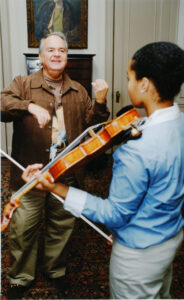
For over 45 years, Mr. Laredo appeared as a member of the beloved Kalichstein-Laredo-Robinson Trio, which left a lasting legacy of commissions and premieres, including recent performances of violist and composer Nokuthula Ngwenyama’s (Viola ’96) piano quartet, Elegy, as well as the New York and Washington, D.C. premiere of Abgang and Kaddish Quartet with clarinetist David Shifrin (’71), written by Pulitzer Prize-winning composer Ellen Taaffe Zwilich. During the 2023–24 season, he toured the United States as conductor and soloist at various venues, including the Kennedy Center and Carnegie Hall, and as chamber musician for the first full season of Espressivo!, a new piano quartet with pianist Anna Polonsky (’99), former Dover Quartet member Milena Pajaro-van de Stadt (String Quartet ’14, Viola ’11, ’10), and his wife, cellist Sharon Robinson.
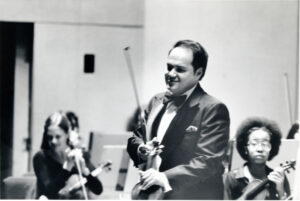
Mr. Laredo’s stewardships of the annual New York String Orchestra Seminar at Carnegie Hall and the International Violin Competition of Indianapolis have become beloved educational pillars of the string community. He currently serves as co-artistic director of Cincinnati’s Linton Chamber Music and the Hudson Valley Chamber Music Circle and held the post of artistic director of the Chamber Music at the Y series in New York for 40 years, where he created an essential forum for chamber music performances and developed a devoted following.
Visit Jaime Laredo’s artist page with Frank Salomon Associates, Inc.
Explore more Curtis history at the Curtis Institute of Music Open Archives and Recitals (CIMOAR) digital collections. Learn more about Curtis’s library and archives HERE.
Photo Credits: 1 & 2.) Christian Steiner; courtesy of Frank Saloman Associates, Inc. 3.) Courtesy of the Queen Elisabeth Competition. 4.) Mr. Laredo at Curtis with Vladimir Sokoloff; courtesy of Curtis library and archives. 5.) Mr. Laredo working with student Melissa White (Violin ’07); Candace DiCarlo. 6.) Jaime Laredo in rehearsal at Curtis; Henry Grossman.


